Do you recall gloves and mattresses when hearing about latex? To your surprise latex in its raw form is a white milky fluid occurring naturally in plants. Latex material is processed to produce a rubber-like substance. Do you also confuse latex with rubber? It’s not the same. In this blog, we’ll explore what is latex made of, discuss its production processes, and more!
What is Latex?
Definition of Latex
Latex occurs in plants or is produced synthetically through chemical processes. It appears as a white milky fluid mainly consisting of rubber particles and water. Natural latex occurs in 10% of flowering plants (angiosperms) but is usually extracted from rubber trees (Hevea brasiliensis the rubber tree) to produce rubber.
Synthetic latex is produced in labs from petroleum compounds like styrene and butadiene. The outcome of latex processing is rubber, which you have seen in various products like balls, balloons, etc.
Composition of Latex
Latex extracted from trees is composed of 30-40% rubber particles, 55-65% water, and small portions of protein, sterol glycosides, resins, gums, ash, and sugars. Its white fluid-like appearance is due to rubber particles (natural polyisoprene polymer particles) and proteins. They coagulate when exposed to air.
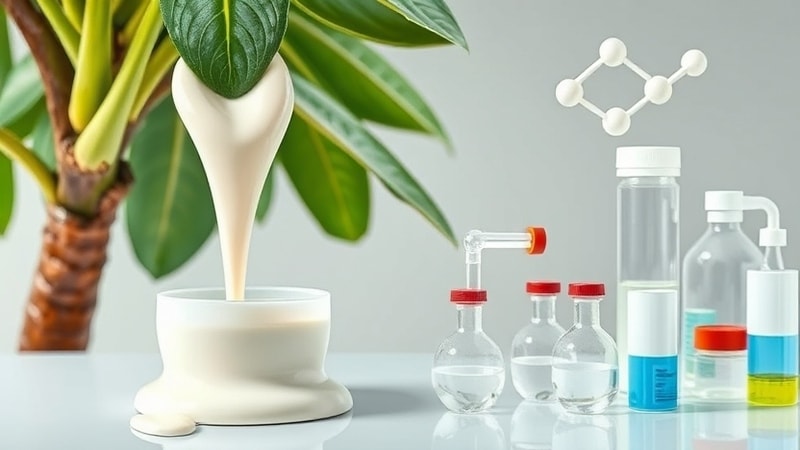
Synthetic latex mimics the chemical structure and properties of natural latex. Its composition is rather simple and consists of styrene and butadiene. These chemicals come from petroleum and natural gas through an extraction process. When combined, styrene and butadiene form a compound called synthetic latex. Other types of synthetic latex are also produced from different chemicals.
Uses of Latex
Latex is not an unusual material; it’s used to produce various common products. The bedding products like mattresses are produced using latex. You may be familiar with latex gloves, shoes, swim caps, balloons, etc. Rubber bands, tyres, and many sporting goods like basketball are entirely made from latex.
Types of Latex
Latex is broadly categorized as natural and synthetic. They both have similar properties but differ in their production. Let’s explore both these types of latex, covering their composition, specific properties, and production process.
Natural Rubber Latex
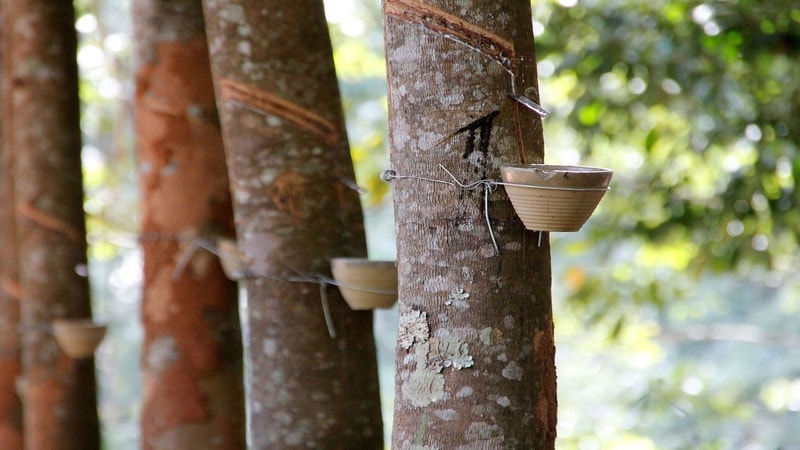
Natural rubber latex, as the name suggests, is produced naturally in trees. The rubber tree (Hevea brasiliensis) is popular for the extraction of latex. It consists of 97% polyisoprene, a natural polymer that forms into rubber. Other compounds in natural latex rubber are protein, sterol glycosides, resins, gums, ash, and sugars.
Latex in trees acts as an insect repellant, protecting the tree from harmful and poisonous insects. It also seals the cracks and forms into vessels. The insects fall prey to these veins carrying latex, and about 30% of attacks on the tree are prevented. Moreover, these veins are carefully cut to harvest latex through a process called tapping.
Natural rubber latex collected from trees undergo two processes to become usable. The first step is coagulation to separate rubber from latex. Then, natural rubber is vulcanized with additives to enhance its properties like elasticity, strength, and temperature resistance. The final form is raw rubber, foamed latex, and liquid latex, used in the production of different products.
Synthetic Latex
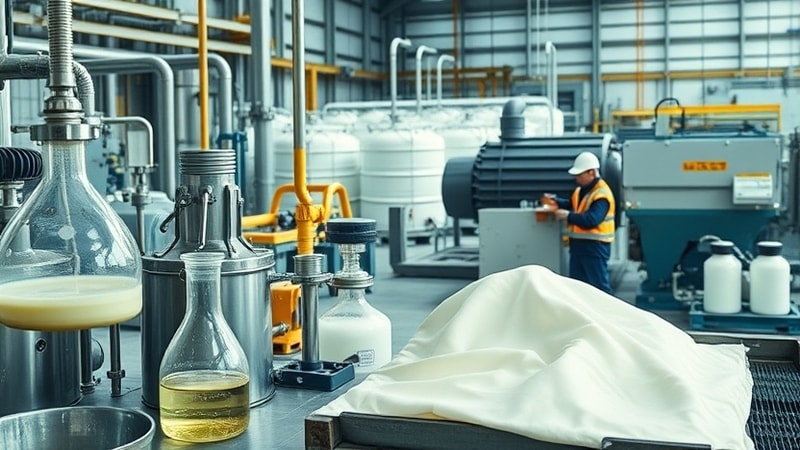
Synthetic latex is produced from the chemical synthesis of petroleum byproducts. It is produced in controlled environments by emulsion polymerization. Different monomers derived from petrochemicals like styrene and butadiene undergo polymerization to form latex emulsion. It is considered a cheap alternative to natural rubber latex.
Synthetic latex has comparable properties to natural rubber latex. It mimics the elasticity, strength, and firmness of rubber. You can also modify its chemical composition to enhance certain properties and make it even better than natural latex. For instance, synthetic latex like styrene butadiene rubber has better chemical and temperature resistance than natural latex.
Since natural latex is expensive and has certain usage limitations, manufacturers use synthetic latex in manufacturing different products. It is modified for specific applications in industries like automobile manufacturing, consumer goods, etc. If you’ve used a latex mattress, it is likely to be made from synthetic latex.
Comparison of Latex Types
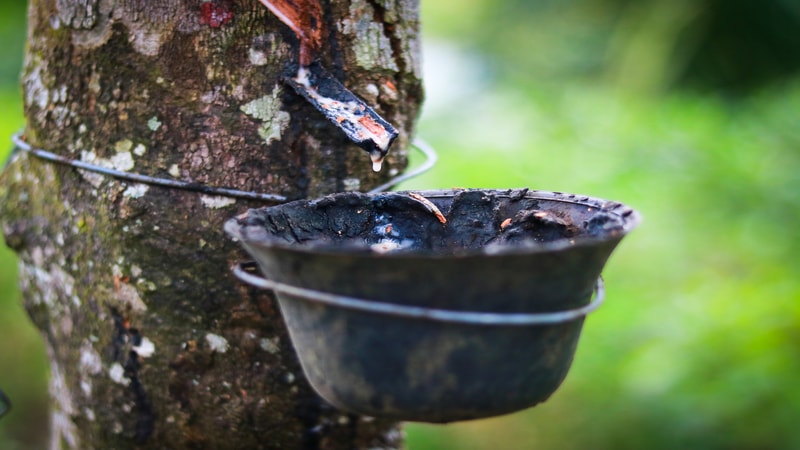
Comparing natural and synthetic latex will be unjust because they have different applications. It’s not like that “natural leather is better than synthetic leather” kind of philosophy. Synthetic latex performs better in chemically abrasive and high-temperature environments, while natural latex performs well in applications requiring flexibility and tensile strength.
In terms of properties, natural latex projects excellent flexibility, tensile strength, and water resistance. When compared to synthetic latex, it mimics all these properties but lacks in performance. However, synthetic latex tends to project better chemical and temperature resistance due to its composition. The natural latex just falls apart when exposed to harmful chemicals.
Synthetic latex is a safe option and does not cause allergic reactions. Therefore it has extensive usage in consumer goods like mattresses and medical equipment like gloves, catheters, etc. When selecting between natural and synthetic latex, you must be mindful of your intended application.
| Latex Types | Properties | Major Difference |
|---|---|---|
| Natural Latex | Elasticity, Flexibility, Tensile Strength, Compression Set, and Stretch Recovery | Natural rubber latex projects excellent flexibility, tensile strength, and water resistance. |
| Synthetic Latex | Durability, Chemical Resistance, Thermal Stability, Uniform Consistency, and Hypoallergenic | Performs better in chemically abrasive and high-temperature environments |
Properties of Latex
Latex material has a unique set of physical, chemical, and mechanical properties. Understanding these properties is critical when selecting it for different applications. Let’s explore:
Natural Rubber Latex Properties
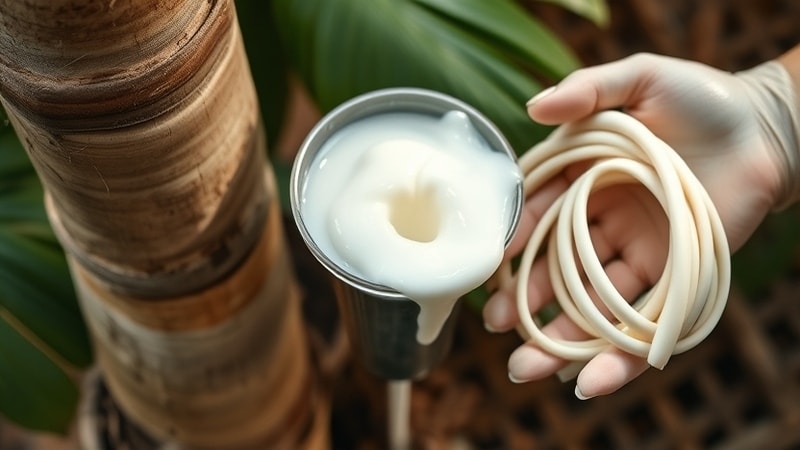
Natural rubber latex has high elasticity, and it can stretch well without deformation. It also has a good tensile strength that prevents breaking when experiencing strong tensile forces. Plus, natural rubber latex exhibits excellent stretch recovery and compression set. It is ideal for products undergoing extreme stretches like rubber bands, gloves, etc.
What makes natural rubber better than synthetic alternatives is its ability to withstand wear, tear, abrasion, and fatigue. It offers better performance in similar applications. However, natural rubber latex lacks chemical and heat resistance. It deforms quickly when exposed to high temperatures and breaks down when it comes in contact with abrasive chemicals like acids, alkalis, and petroleum solvents.
Synthetic Rubber Properties
Synthetic rubbers have all the properties of natural latex. It has good elasticity, tensile strength, and stretch recovery. Manufacturers change the composition of synthetic rubbers with additives that improve their properties for specific applications. But natural rubber latex tends to have better elasticity and performance in the long run.
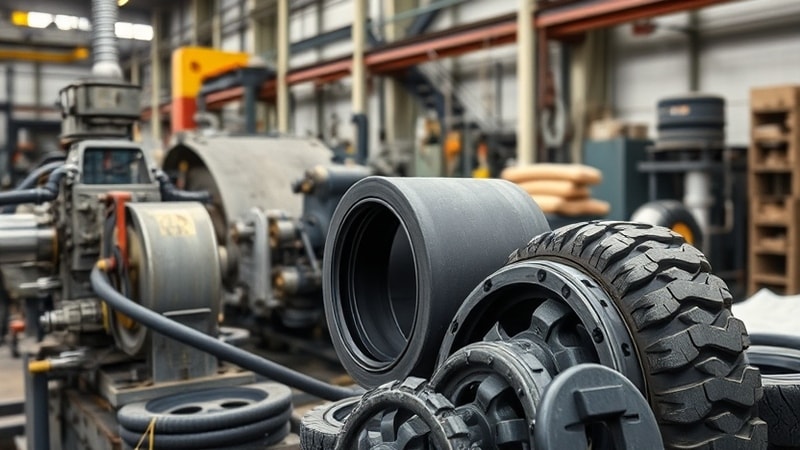
Since synthetic rubber is made from petrochemicals, it shows better resistance to chemical compounds and heat. You can use synthetic rubber under extreme operating conditions. There are no natural proteins in its chemical composition, making it completely allergen-free. Synthetic rubber has excessive use in automobiles car tires, industrial applications, aerospace, etc.
Durability of Latex Materials
Natural latex material is preferred over synthetic latex due to its better elasticity and tensile strength. But natural latex is highly prone to degradation because of its organic composition consisting of proteins and other solubles. Environmental factors like light, heat, and ozone disturb its chemical structure, leading to degradation.
Synthetic latex is more durable compared to natural latex. It is made chemically resistant to heat, humidity, UV, and ozone radiation. The use of additives in its production makes it less susceptible to environmental factors. Synthetic latex is suitable for use in harsh environments; it is found in car tyres.
Latex Manufacturing Process
Latex is processed to produce latex foam; it has extensive usage in the bedding industry, automobile manufacturing, medical equipment, etc. Here are common latex manufacturing processes:
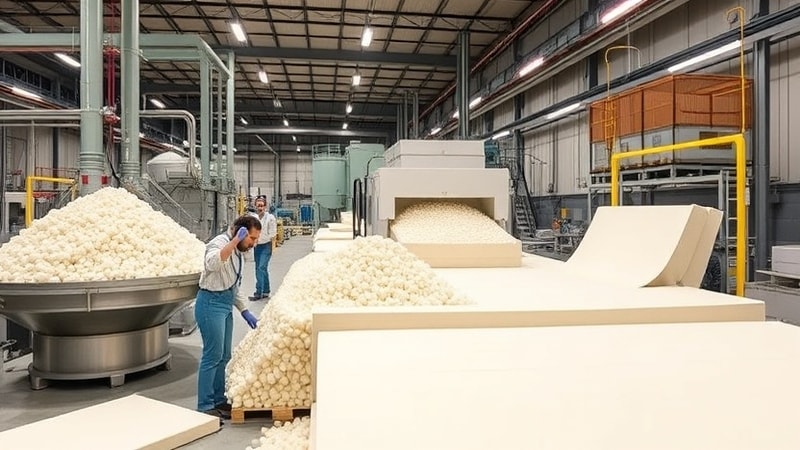
Dunlop Process
The Dunlop Process is the most efficient latex manufacturing process. The liquid latex extracted from trees is mixed to form a frothy-like foam. Usually, a mechanical mixer is employed to whip the liquid latex. Then, it is transferred to a mould to form the required shape.
The liquid latex in the mould is added with vulcanization agents like sulfur and peroxides. The latex undergoes a vulcanization process heated at 284°F – 320°F (140–160°. It improves its strength, elasticity, and durability. Also enhances chemical and environmental resilience.
Once the process is completed, the liquid latex forms into a foam. It is washed to remove impurities and then dried to remove moisture content.
Talalay Process
The Talalay latex manufacturing process is used to produce gel-type latex foam best for use in the medical sector, specifically wellness, and orthopedics. The process is similar to the Dunlop process, with slight modifications in foam formation.
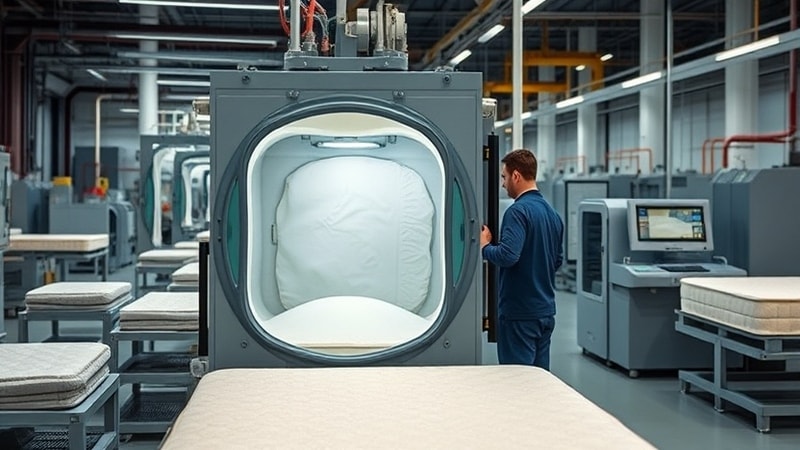
The liquid latex is half-filled in a vacuum-sealed mould. A vacuum is created inside the mould at extremely high pressure, which triggers vacuum expansion in the liquid form of latex. The latex takes the shape of the mould as it expands. The latex is then frozen, and carbon dioxide is pumped to fill air gaps and give a gel-like texture to the foam.
Further, the latex goes through a vulcanization process at 220ºF (104°C). When ready, it is washed to remove impurities and then dried at moderate temperatures.
Radiation Cross-Linking of Synthetic Rubber Latex
Cross-linking refers to the formation of covalent bonds in the chemical structure of synthetic rubber latex. These are the strongest chemical bonds that help improve tensile strength, chemical resistance and other key characteristics of latex.
The synthetic rubber latex is exposed to radiations like gamma rays or x-rays after going through the vulcanization process. As a result, the chemical structure changes and cross-links are formed.
The radiation cross-linking eliminates the need for chemical additives to enhance synthetic latex properties. The latex material gets a medical grade for use in chemical-sensitive applications.
Latex Applications

Latex is a versatile material readily used in the manufacturing of consumer goods. It also has specialized applications across various industries. Here are a few latex applications:
Adhesives for Packaging
Have you noticed the cold seal in your cereal bag or your favorite chocolate bar? The adhesives used to ensure proper sealing are made from natural vulcanized rubber latex. You will mostly find natural rubber latex in confectionery packaging.
Natural latex exhibits low adhesion to other materials. This property allows its use as a temporary adhesive for packaging. The natural latex creates a conveniently removable seal in packaging.
Bitumens: Modified
Bitumens are extensively used for waterproofing, road paving, and concrete reinforcement. It is modified with natural rubber latex for durability and flexibility. Since rubber latex is known for water resistance, it is used in bitumens for enhanced water resistance.
Bitumen is used as a binder in asphalt roads. Its chemical functionalities can be improved with natural latex to bind the asphalt better. Bitumen characteristics like softening point temperature, specific gravity, and viscosity are improved to make durable asphalt roads.
Biomedical Applications of Latex

Natural latex is a crucial raw material in the biomedical industry. It is used to produce medical tubing, surgical gloves, and implantable devices. It is a safe substitute for other artificial materials with high health risks.
Synthetic latex also has a variety of applications in biomedical. It is used in the manufacturing of wound dressing, like elastic bandages. Most medical tapes have synthetic latex adhesives. Synthetic latex condoms are also popular due to their high impermeability.
Latex Allergies and Toxicity
Some natural substances are inherently toxic for human beings, while others trigger allergic reactions. Is latex really toxic or allergic? Let’s discover:
What is a Latex Allergy?
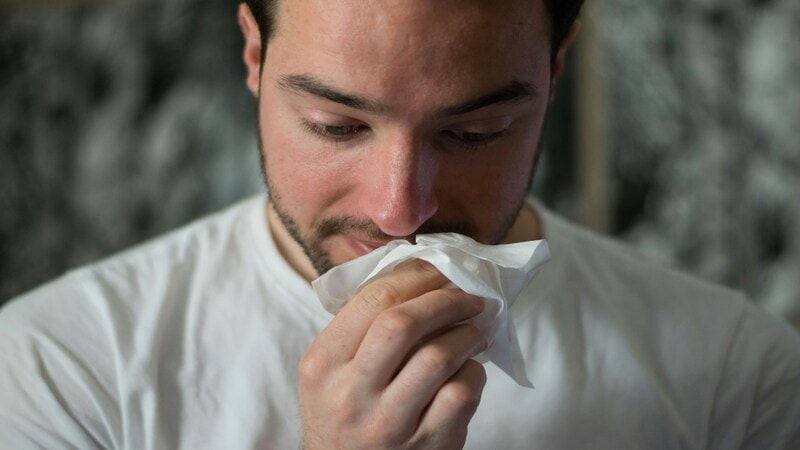
The human body sometimes considers natural substances harmful and reacts adversely. It’s what we know as an allergy. You may have encountered people allergic to dust, fur, and even peanuts. Similarly, latex allergy is also common in different people.
Certain natural proteins in latex trigger allergic reactions in the human body. The symptoms of allergic reaction include skin irritation, hives, runny nose, rashes, and breathing difficulty. If you’re allergic to latex, avoid direct contact.
Is Latex Toxic to Humans?
Latex is not a toxic material and is safe to use. However, natural latex may cause allergic reactions in some people. If you experience symptoms like hives or rashes when exposed to latex, you may have a latex allergy.
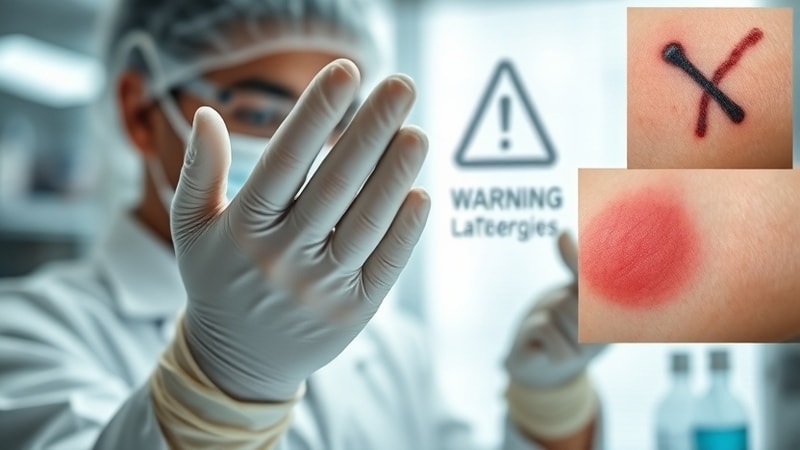
Although latex allergy is rare, you need to be very cautious about it. The allergic reaction to latex paint can be very severe.
Sustainability of Latex
Latex occurs in both natural and synthetic forms. The sustainability of a material depends on its source, extraction process, and renewability. Let’s evaluate latex sustainability:
Is Latex a Sustainable Material?
Latex is a sustainable material extracted from trees through an indigenous process. It’s known as rubber tapping, in which a small incision is made on the tree to extract latex. There’s no adverse effect on the tree as latex is part of an inherent defense mechanism of trees to protect themselves from harmful insects.

Natural latex is processed with minimum use of chemicals, and its consumption doesn’t impact the environment. It is 100% biodegradable and natural. You can use it as a vegan alternative to leather for similar applications.
Environmental Impact of Latex Production
Processes involved in latex production don’t release any harmful chemicals that can impact the environment. It is naturally extracted from rubber trees. However, the transportation and processing of latex can have an environmental impact. But each mature rubber tree lasts for 30 years and covers for the impact caused.
On the contrary, the production of synthetic latex has a high environmental impact. It is derived from petrochemicals that directly affect the environment with greenhouse emissions. The processing of synthetic latex causes the release of chemicals containing heavy metals that affect the environment.
Is Latex Rubber?
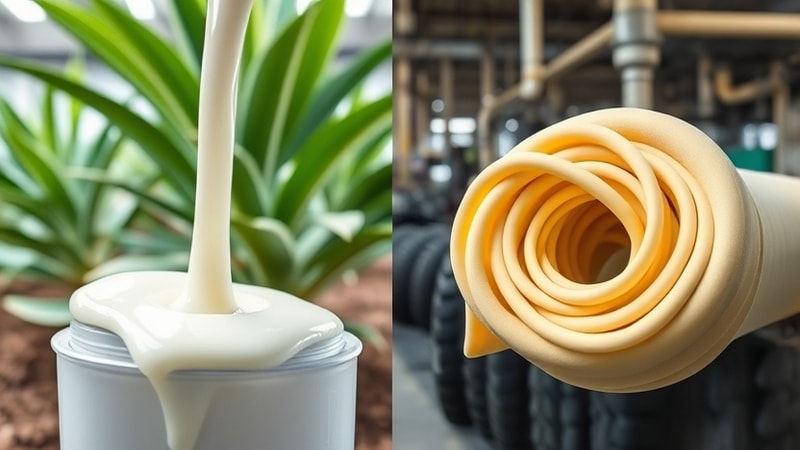
Most people often confuse latex with rubber. Is latex rubber? It’s a debatable topic if you’re not clear about what is latex made of. For simple understanding, think of latex as a raw material used to produce rubber. Latex contains rubber particles that are extracted to form rubber as we use it.
Conclusively, latex and rubber are not the same. If you compare their appearance, latex is a milky white substance while rubber is solid. You may say that rubber is a byproduct of latex extracted through a simple process.
Rubber is produced naturally through latex or synthetically from chemical synthesis. Natural rubber is derived directly from latex, whereas synthetic rubber comes from petroleum compounds. Both have similar properties, but natural rubber performs better in terms of elasticity and tensile strength.
Common Uses of Latex
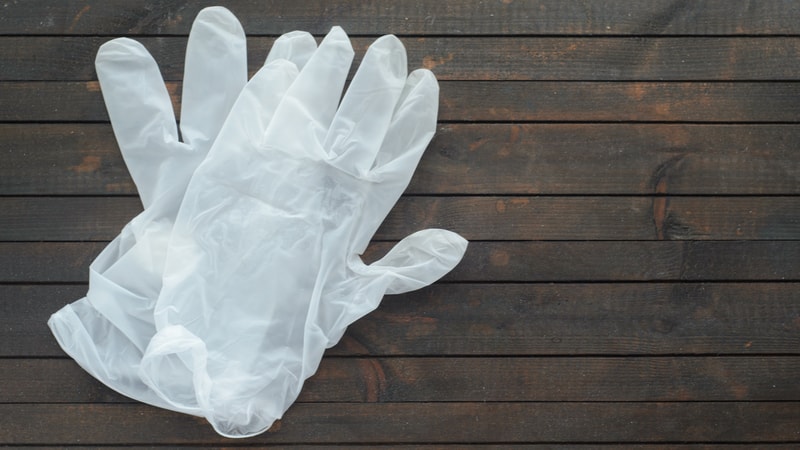
Latex is a commonly used material. You will find latex products almost everywhere. Many modern households have latex mattresses due to their firmness and durability. The balloons you brought to your last house party are most likely to be made of latex. More common latex objects include gloves, rubber bands, shoe soles, chewing gum, etc.
Latex also has extensive use in industrial applications. It is drawn into thin sheets to be used as protective coverings. Latex is also used for coatings, especially in acrylic paints, because of its quick drying and washability. Many adhesives used in packaging are also latex-based.
Medical supplies ranging from surgical gloves to catheters are made from latex. The unique properties of latex, like elasticity, impermeability, and durability, make it ideal for medical use. Moreover, medical-grade synthetic latex is used in implants and prosthetics.
Benefits and Challenges of Latex
Latex is a versatile and highly durable material. It offers excellent elasticity, tensile strength, and waterproofing. These special properties allow its usage across different sectors. Natural latex is a safe and sustainable solution for use in the medical sector. Similarly, synthetic latex is found in almost everything from toys to automobiles.
There are two major challenges associated with latex. Natural latex causes allergic reactions in some individuals. It has natural proteins that react with certain immune systems in humans. Moreover, synthetic latex is a byproduct of petrochemicals and has adverse environmental impacts.
Choosing the Right Latex Material
Looking to buy latex material? Here are a few crucial considerations to select the right material as per your requirements:
Factors to Consider
Where would you use the latex materials? It’s the most critical factor to consider when you go on a market hunt. The intended application will determine what type of latex, synthetic or natural, will best suit your needs. Additionally, the information about operating conditions will be instrumental in determining the required level of flexibility, tensile strength, and resistance to chemicals.
Importance of Testing Rubber Materials

Testing of rubber materials helps evaluate the product’s durability, performance, and compliance with safety standards. You can easily identify potential failure points and rethink your product formulation or material selection. There are various standardized rubber material tests by ASTM and DIN that you can conduct.
Natural Rubber Latex vs. Synthetic Rubber Latex: Which is Right for You?
Choosing between rubber latex and synthetic rubber is no rocket science. You need to be clear about the intended use. If your application needs good performing material in terms of flexibility, tensile strength, and resistance to water, natural rubber latex is the right choice. If your operating conditions are harsh, you should go for synthetic rubber latex.
FAQs
Is latex 100% rubber?
Latex is not 100% rubber; it is composed of 40% rubber, 65% water, and other particles like protein, sterol glycosides, resins, gums, ash, and sugars.
What is latex material used for?
Latex is used for making rubber products like gloves, balloons, swim caps, etc. You will also find latex mattresses and pillows.
How is latex manufactured?
Natural latex is extracted from trees and processed to produce different products. Synthetic latex is manufactured in a controlled environment through chemical synthesis.
Conclusion
Latex is a versatile material with excellent durability and tensile strength. Although latex has extensive applications, it somewhat fails to perform in rough operating conditions. Its susceptibility to environmental conditions and potential allergenic properties often necessitate alternatives.
Do you know about silicone rubber? It’s the best alternative to latex, especially for demanding applications that require high resistance to temperature and environment. It’s durable and outperforms latex with better durability and temperature resistance. Discover 4 Types of Silicone and Their Distinctions to match your requirements.
Hongju: World’s Top Producer of Silicone Rubber
Want to explore silicone rubber options for your products? We provide tailored solutions as per the client’s requirements. We pride ourselves as the world’s leading producer of synthetic latex with over two decades of expertise. Our advanced R&D and hi-tech manufacturing facilities enable us to manufacture products that stand out with high durability and enhanced properties.
You can get in touch with one of our representatives right now. We have a dedicated team of technical experts who will guide you about product customization and our expertise. You will experience the best customer service with us!